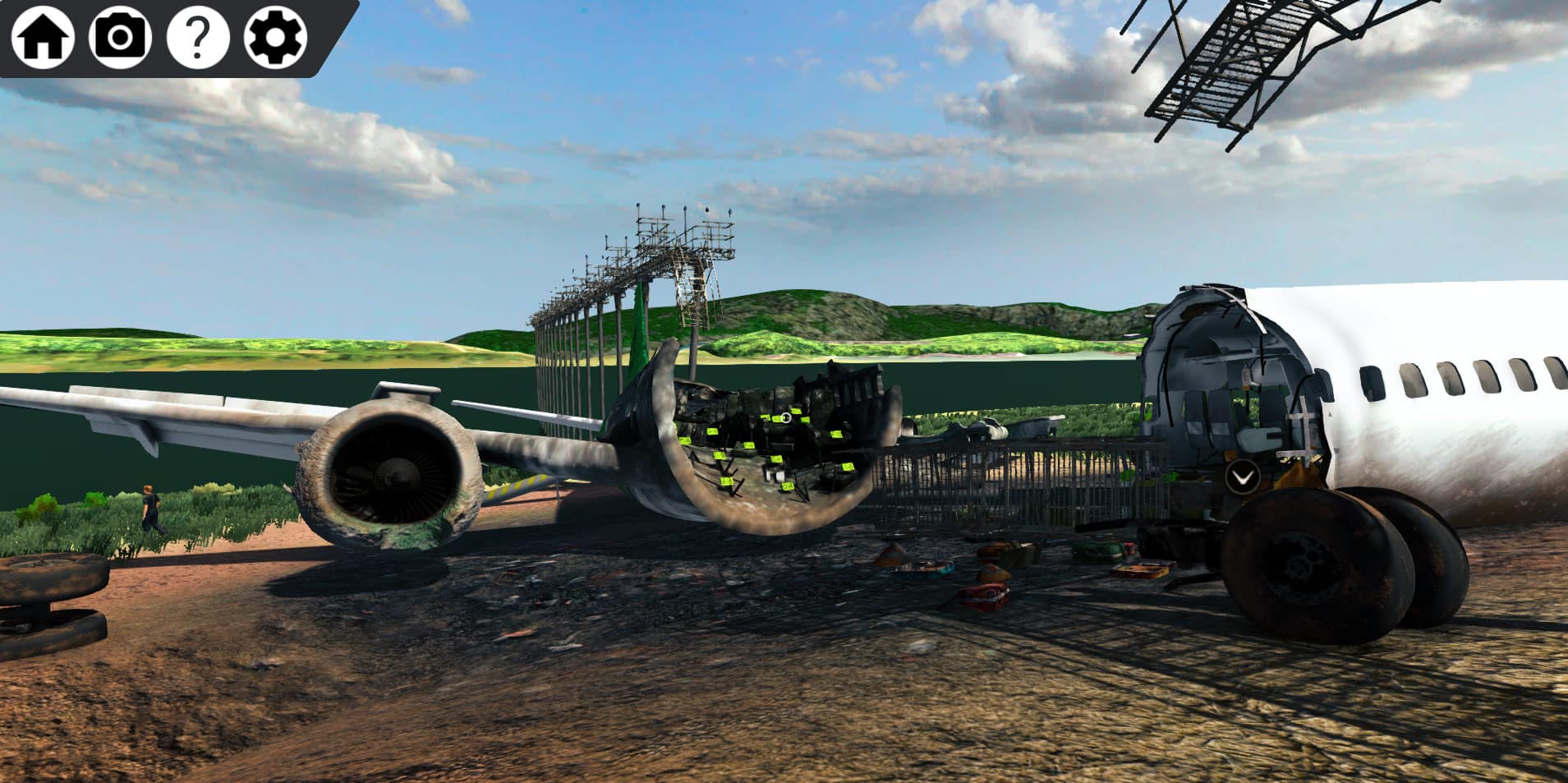Virtual Reality Powers Real Learning

Imagine going through the wreckage of an airliner that has broken apart and burned, looking for clues to determine what caused the accident. Only highly trained investigators ever have a chance to take part in such scenarios. Yet, thanks to the rapidly developing technology of augmented reality (AR) and virtual reality (VR), Embry-Riddle Aeronautical University Worldwide campus students can examine crashed aircraft in a simulated environment, searching for clues with their computers, tablets, smartphones or AR goggles.
Scott Burgess, associate professor in Worldwide’s College of Aeronautics has been involved in Worldwide’s virtual reality labs since they began. His 34 years of aviation experience includes multiple flight ratings and developing the helicopter flight-training program at the university’s Prescott campus in Arizona. He now teaches aviation safety and sUAS (small unmanned aircraft systems) operations courses for Embry-Riddle Worldwide.
Q – Where did the idea for virtual labs come from?
Around five years ago, we were exploring virtual classroom concepts. Worldwide Associate Professor Katherine Moran wanted to explore the idea of a virtual crash lab. Our Daytona Beach and Prescott campuses have the real thing – actual wreckage of aircraft accidents that students can physically examine. Katherine wanted a way to address the academic aspects of accident investigation in plane crashes for Worldwide students that was as close to reality as possible.
The next year, we collaborated with Pinnacle Solutions, a simulation and training services company to create our first virtual learning environment – a crash lab of a real accident where a 737 airliner had skidded off a runway and broken apart. In 2016, a talented Worldwide team of Brent Terwilliger, Brian Sanders, Ken Witcher, Chief Technology Officer Becky Vasquez and others partnered again with Pinnacle Solutions to develop the Aerial Robotics Virtual Lab.
Q – What can students access ?
In the crash lab, students can enter a virtual environment and act as National Transportation Safety Board investigators, walking through the wreckage, able to zoom in on details. They collect and analyze data and apply what they’ve learned to determine possible scenarios that led to the aircraft disaster. In the Aerial Robotics Virtual Lab, students can jump online anywhere in the world to design and build an unmanned aerial vehicle, then test its flight capabilities and analyze the results.
We’ve now combined both labs into a Virtual Hub, a planning center where students can enter to conduct Aerial Robotics Virtual Lab, crash Lab, or flight activities. Two portals allow students to design, build an test an unmanned aerial vehicle (UAV), conduct preflight activities, then fly. They can then use a virtual UAV to fly over the aircraft crash site, gathering data, to determine how and why the accident happened.
Q – What comes next for Embry-Riddle Worldwide in the world of AR/VR?
We have proposed expanding the Hub’s capabilities to encompass maintenance assurance, emergency response and operations, air traffic control and other aspect of airport operations. These enhancements will offer applications for our business, aeronautics, safety, human factors and emergency management degrees and more.
We are discussing remote–split operations, where a real UAV, maybe sited at one of our faculty locations in Texas or Washington, is piloted remotely by a student in another location. We’re seeking funding to create a crash lab with actual wrecked aircraft so students can remotely pilot a UAV to conduct data gathering missions. The information collected could be video. infrared or lidar imagery to build a 3D model of the crash site to aid in an accident investigation, or aid in search and rescue.
We see the potential in incorporating AR goggles with actual UAV sensors, or where the students could be live in the virtual lab with faculty, assisting in dismantling an aircraft engine using AR goggles and hand tracking integration. We want to continue introducing cutting-edge technology like this to our students. We want to expand their learning environment and bring Star Wars–like tech to life.
Honored with a 2018 CIO 100
Because of innovations like virtual labs for aerial robotics and aviation accident investigations, virtual classrooms and real-time online collaboration, Embry-Riddle Worldwide has been recognized as one of only three educational institutions globally included in the prestigious 2018 CIO 100, an annual award program recognizing organizations around the world that exemplify the highest level of operational and strategic excellence in information technology.
Editor’s Note: This article was originally published in the fall 2018 edition of Embry-Riddle’s ResearchER magazine (Vol. 2, No. 2). The ResearchER archives can be found on Scholarly Commons.

 James Roddey
James Roddey